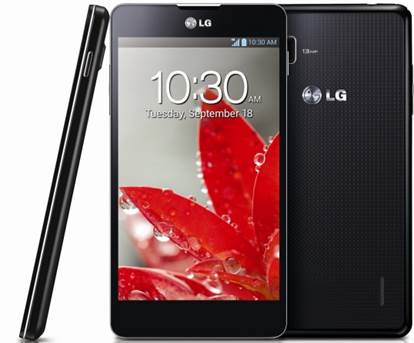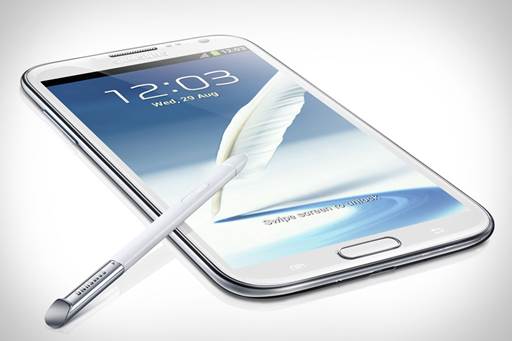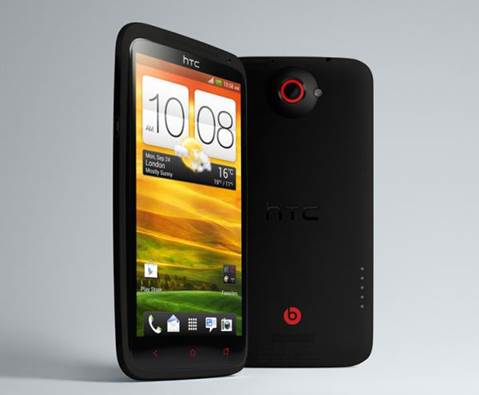Camera
We have been quite impressed by the 8MP
camera on the first PadFone, but its competitors defeated it in the speed and
nighttime performance aspects. However, this is no longer true for the beastly
13MP, f/2.4 camera in this case. Thanks to the Sony BSI sensor and dedicated
image processor, this camera can not only manage the zero shutter lag, but it
is also able to take 100 continuous shots with the speed of 6fps in full 13MP
resolution – which easily defeat HTC One X’s camera (8MP, maximum number of
shots is 99 with the speed of 4fps) and that of Samsung Galaxy S III (8MP, 20
is its maximum number of shots at 3.3 fps). While there is no specific camera
button, you can use the volume button as the shutter button, none of which
provides the two-stage click for pre-focusing.

Image
captured by the Asus PadFone 2
Besides the new “silly face” effects, the
PadFone 2 also allows you to capture pictures with the full resolution while
filming a video, but this feature would be disabled if you switch between the
impressive high-speed video recording modes: 1080p with the maximum speed of
30fps, 720 at 60fps and 480p at up to 90fps. We said “maximum” because the
frame rate reduces in the dark environment, so bear in mind that fact if you
wish to take the advantage of the quick video recorder. However, it is rare to
see smartphones what can record video at the speed of 60 fps or more. The
playback clips at their frame rate instead of in slow motion – you will find
how great it is in the 720p sample video clip at the speed of 56.26 fps.
The images really meet our expectation. We
captured many lively shots under the blue sky in Taipei city and some are even
more impressive in the HDR mode. The nighttime is much better than the last
version, but just like many cameras, you need to be patient in order to focus
appropriately and shooting stably. You can definitely look around the ISO (from
50 to 800) as well as exposure compensation in order to have prettier images in
nighttime, or you can try many of the scene modes provided by the enhanced
camera apps. Many other filter effects are also offered to please Instagram
fans, and ladies can have fun with the new beautification mode that smoothing the
skin and erasing wrinkles, enlarging eyes and slimming faces. We tried this
beautification mode and recognized that it did not work that well on men. To
check for the PadFone 2’s performance in other aspects, please have a look in
the gallery below.
For comparison, we used the HTC One X
(AT&T), and it can be easily seen that the new camera sensor on the PadFone
2 provides less noise and more details, especially when compared at the 100%
crop level. The PadFone 2 (with the 50121 firmware version of camera) seems to
have the tendency of showing more blue under a clear blue sky when it is in the
auto mode, and this is even more obvious in the second comparison photos below.
At night, the One X defeats both generations of the PadFone in terms of white
balance and details, although because the PadFone 2 has higher resolution, it
might have higher risk of being noise compressed. We have Asus words that they
will check the devices’ performances regularly before and after selling them,
so these camera issues might be fixed very soon.

New
camera sensor on the PadFone 2 provides less noise and more details, especially
when compared at the 100% crop level
Performance and battery life
Simply speaking, PadFone 2 is one of the
most elegant phones that we have ever used. Android experience is enhanced by
the very high-speed response time of the touchscreen with the speed of 65ms,
which is obviously faster than the One X and Galaxy S III. What we learnt from
the first hands-on at least is that it is much quicker than the original
version, especially when you type with the new artificial keyboard of Asus. Not
to mention, talking about the raw processing power, the cellular SoC APQ8064
can easily beat most of its competitors, if not all, and of course we
definitely feel it when playing heavy 3D games with HD video clips. The
interesting things is that the benchmarking result shows that Asus have done
the better job compared to LG in optimizing its devices for the Snapdragon S4
Pro, and thus bringing the PadFone 2 to lead our smartphone testing charts.
PadFone 2
·
Quadrant Advanced: 7,703
·
Vellamo 1: 2,520
·
Vellamo 2 HTML: 2,018
·
AnTuTu: 15,489
·
SunSpider 0.9.1 (ms): 1,291.9
·
GLBenchmark 2.5 Egypt HD C24Z16 Offscreen (fps):
31
·
CF-Bench: 18,237
·
Battery life: 7:30 (HSPA/ the phone) / 9:28 (the
tablet*)

PadFone
2
PadFone
·
Quadrant Advanced: 5,354
·
Vellamo 1: 2,521
·
Vellamo 2 HTML5: 1,800
·
AnTuTu: 7,042
·
SunSpider 0.9.1 (ms): 1,559
·
GLBenchmark 2.5 Egypt HD C24Z16 Offscreen (fps):
13
·
CF-Bench: 9,571
·
Battery life: 6:15 (the phone)/ 9:56 (the
tablet*)/ 17:30 (laptop)

PadFone
Optimus
G (all models)
·
Quadrant Advanced: 7,628
·
Vellamo 1: 2,143
·
Vellamo 2 HTML5: 1,710
·
AnTuTu: 11,284
·
SunSpider 0.9.1 (ms): 1,283
·
GLBenchmark 2.5 Egypt HD C24Z16 Offscreen (fps):
31
·
CF-Bench: 14,398
·
Battery life: 8:43

Optimus
G
Galaxy
Note II
·
Quadrant Advanced: 6,819
·
Vellamo 1: 2,482
·
Vellamo 2 HTML5: 1,831
·
AnTuTu: 13,589
·
SunSpider 0.9.1 (ms): 1,023
·
GLBenchmark 2.5 Egypt HD C24Z16 Offscreen (fps):
17
·
CF-Bench: 15,267
·
Battery life: 10:45

Galaxy
Note II
Global
HTC One X
·
Quadrant Advanced: 4,906
·
Vellamo 1: 1,617
·
Vellamo 2 HTML5: 1,364
·
AnTuTu: 11,030
·
SunSpider 0.9.1 (ms): 1,773
·
GLBenchmark 2.5 Egypt HD C24Z16 Offscreen (fps):
7.5
·
CF-Bench: 13,233
·
Battery life: 6:00

Global
HTC One X
SunSpider: the lower the score the
better
*It includes the duration time of the
phone-only mode, because the PadFone Station does not work anymore when the
battery is empty.